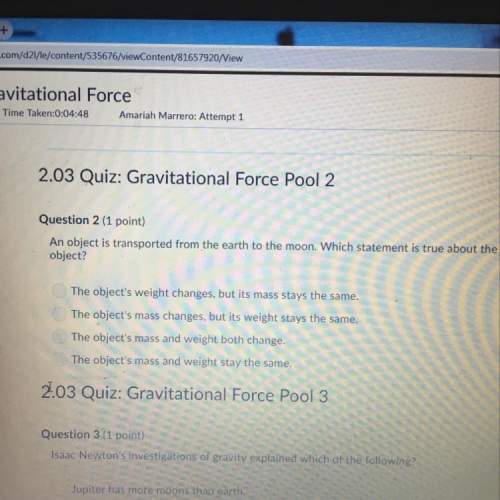
Match each of the following intermolecular forces to the corresponding description to the nature of the attraction. ion-dipole dipole-dipole hydrogen bond london dispersion a. attractions between oppositely charged ends of two or more polar molecules. b. attraction between a partially positively charged h-atom attached to a highly electronegative atoms (i. e. n, o, or f) and the lone pair of another electronegative atom. c. attraction between an instantaneous dipole and an induced dipole on a neighboring atom or molecule, do to the distortion of the electron shape surrounding the atoms. d. attraction between a charged ion and the end of a dipole with the opposite partial charge.

Answers: 1


Another question on Chemistry

Chemistry, 21.06.2019 17:10
There are 6.022 x 10^23 atoms of hg in 1 mole of hg. the number of atoms in 4.5 moles of hg can be found by multiplying 4.5 by 6.022 x 10^23 a. 2.7 x 10^24 b. 27 x 10^23 c. 2.71 x10^24 d. 27.099 x 10^23
Answers: 3

Chemistry, 22.06.2019 08:30
For each of the compounds below, show that the charges on the ions add up to zero. a. kbr b. cao c. li(2)o d. cacl(2) e. alcl(3)
Answers: 2

Chemistry, 22.06.2019 12:00
A5.000 g sample of niso4 h2o decomposed to give 2.755 g of anhydrous niso4. what is the formula of the hydrate? what is the full chemical name for the hydrate? what is the molar mass of the hydrate? niso4•_h2o what is the mass % of water in the hydrate?
Answers: 1

Chemistry, 22.06.2019 13:30
Astudent is trying to create a table that compares hypotheses, theories, and laws. hypothesis theory law do scientific researchers formulate it? yes yes yes does it explain why things happen? yes yes no yes yes yes is it used to make predictions? no yes yes which of the following questions would most likely fill the blank in the table? is it an intelligent guess? is it newly formulated? is it based on observations? has it been proved?
Answers: 1
You know the right answer?
Match each of the following intermolecular forces to the corresponding description to the nature of...
Questions



History, 16.06.2020 22:57

Mathematics, 16.06.2020 22:57


Mathematics, 16.06.2020 22:57

Mathematics, 16.06.2020 22:57



Mathematics, 16.06.2020 22:57

Mathematics, 16.06.2020 22:57



Biology, 16.06.2020 22:57





Mathematics, 16.06.2020 22:57

Mathematics, 16.06.2020 22:57




